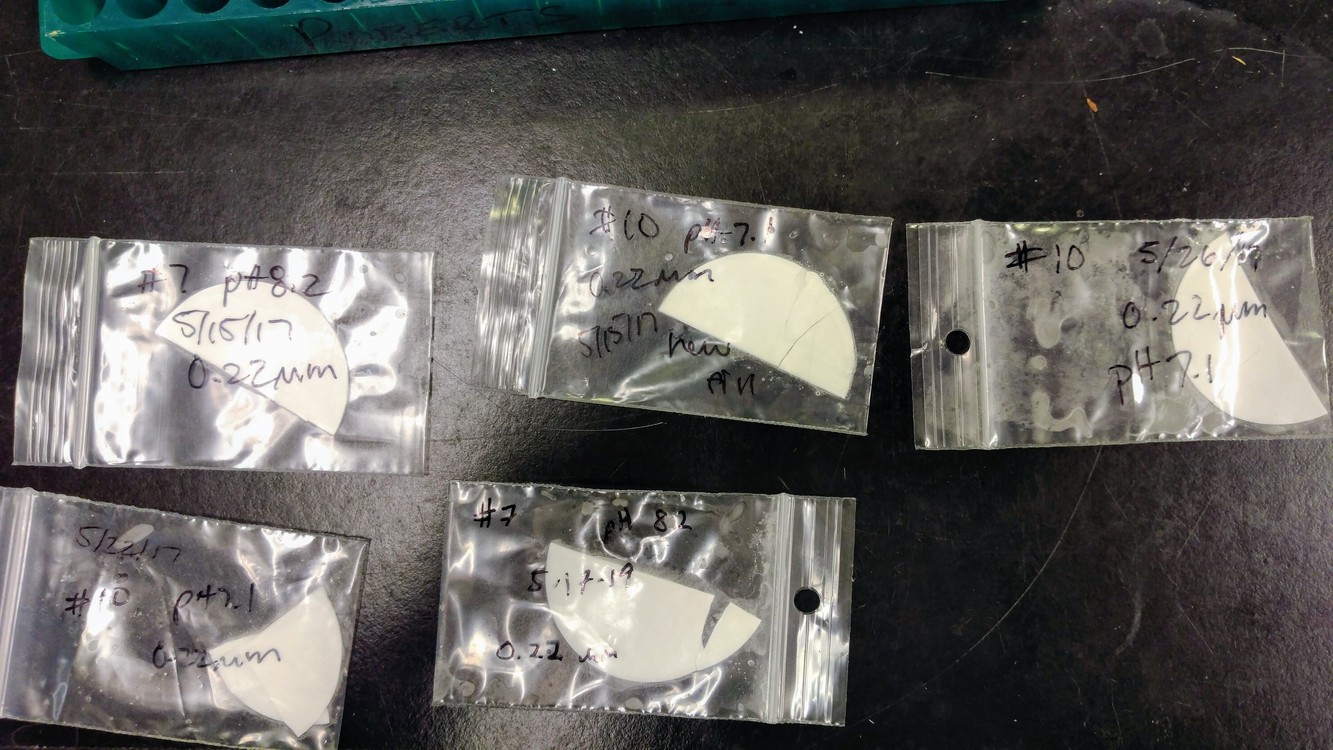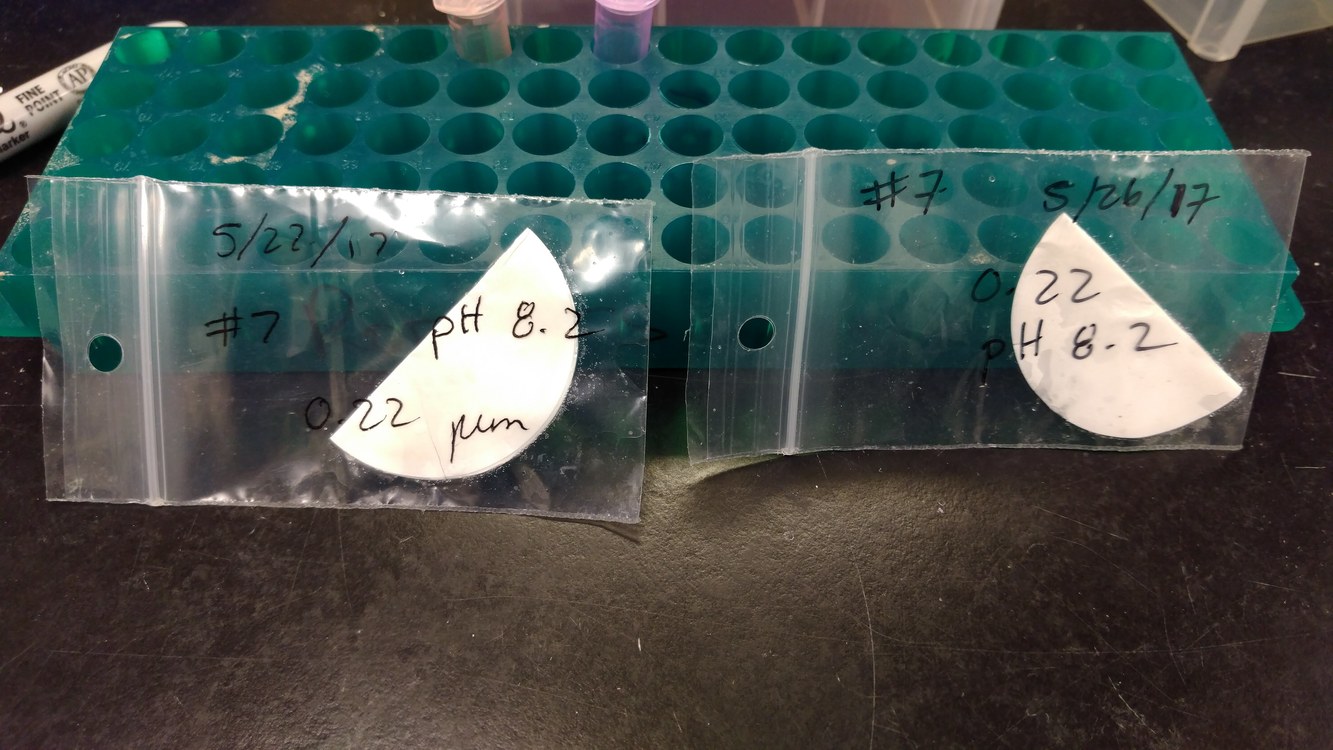After discussing the preliminary DNA isolation attemp with Steven & Emma, we decided to proceed with DNA isolations on the remaining 0.22μm filters.
Isolated DNA from the following five filters:

DNA was isolated with the DNeasy Blood & Tissue Kit (Qiagen), following a modified version of the Gram-Positive Bacteria protocol:
- filters were unfolded and unceremoniously stuffed into 1.7mL snap cap tubes
- did not perform enzymatic lysis step
- filters were incubated with 400μL of Buffer AL and 50μL of Proteinase K (both are double the volumes listed in the kit and are necessary to fully coat the filter in a 1.7mL snap cap tube)
- 56oC incubations were performed overnight
- 400μL of 100% ethanol was added to each after the 56oC incubation
- samples were eluted in 50μL of Buffer AE
- all spins were performed at 20,000g
Samples were quantified with the Roberts Lab Qubit 3.0 and the Qubit 1x dsDNA HS Assay Kit.
Used 5μL of each sample for measurement (see Results for update).
Results:
Raw data (Google Sheet): 20180426_qubit_metagenomics_filters
| Sample | Concentration(ng/μL) | Initial_volume(μL) | Yield(ng) |
|---|---|---|---|
| Filter #10 pH 7.1 5/15/17 | 0.296 | 50 | 14.65 |
| Filter #7 pH 8.2 5/15/17 | 8.44 | 50 | 422 |
| Filter #7 pH 8.2 5/1917 | 2.52 | 50 | 126 |
| Filter #10 pH 7.1 5/22/17 | 2.0 | 50 | 100 |
| Filter #10 pH 7.1 5/26/17 | 11.9 | 50 | 595 |
Samples were stored Sam gDNA Box #2, positions G8 – H3. (FTR 213, #27 (small -20oC frezer))
